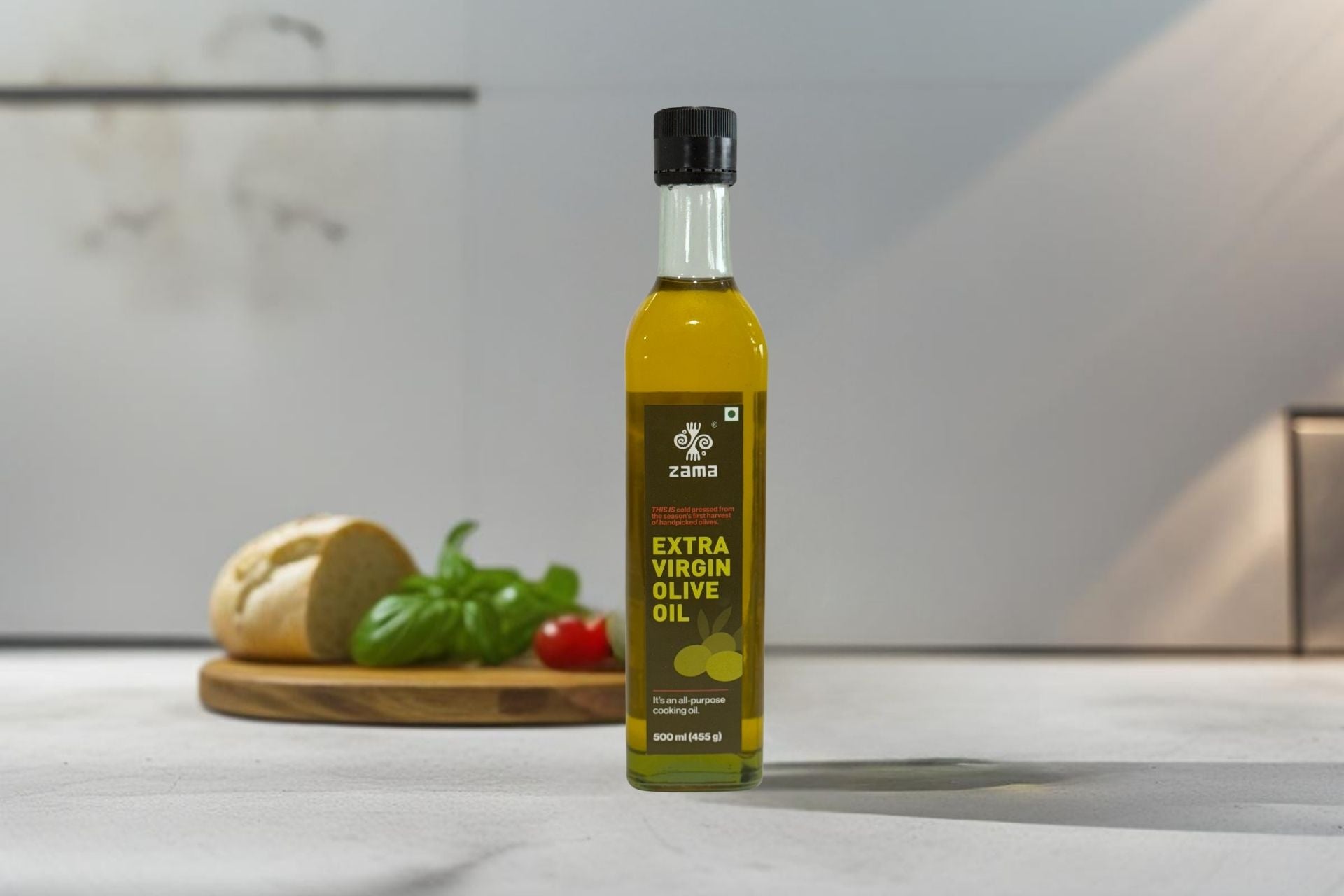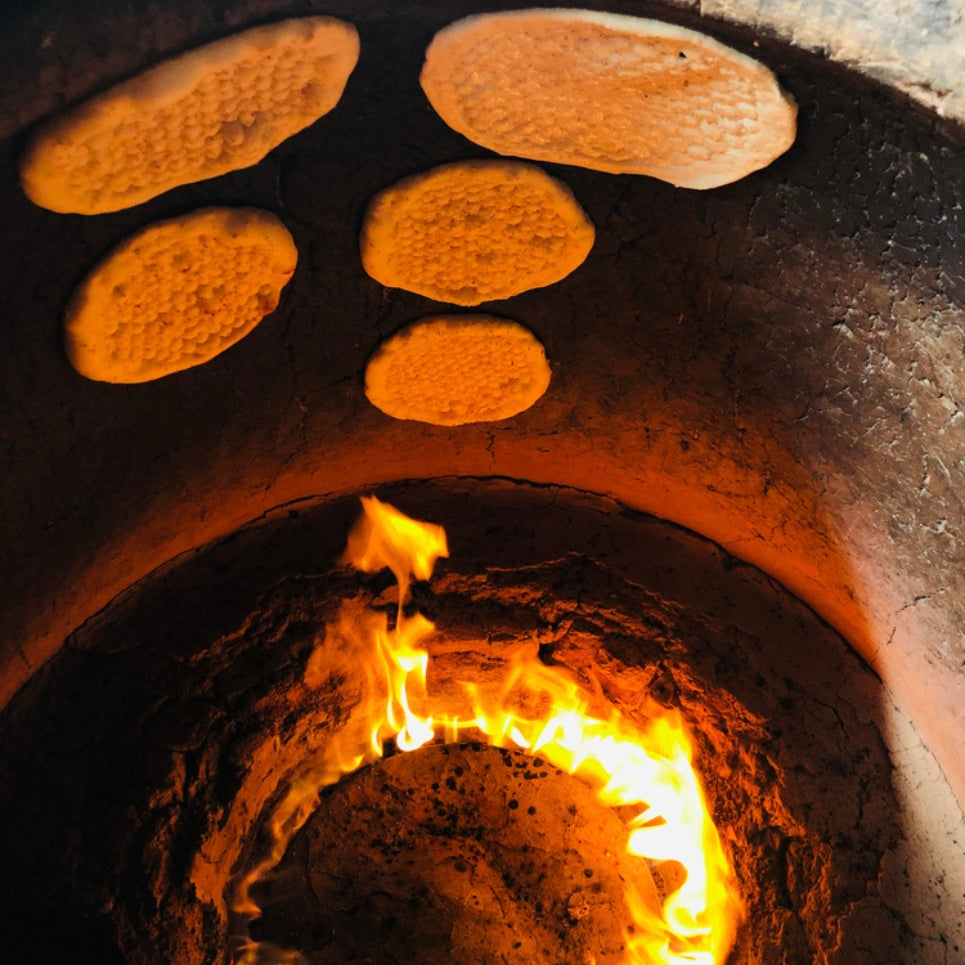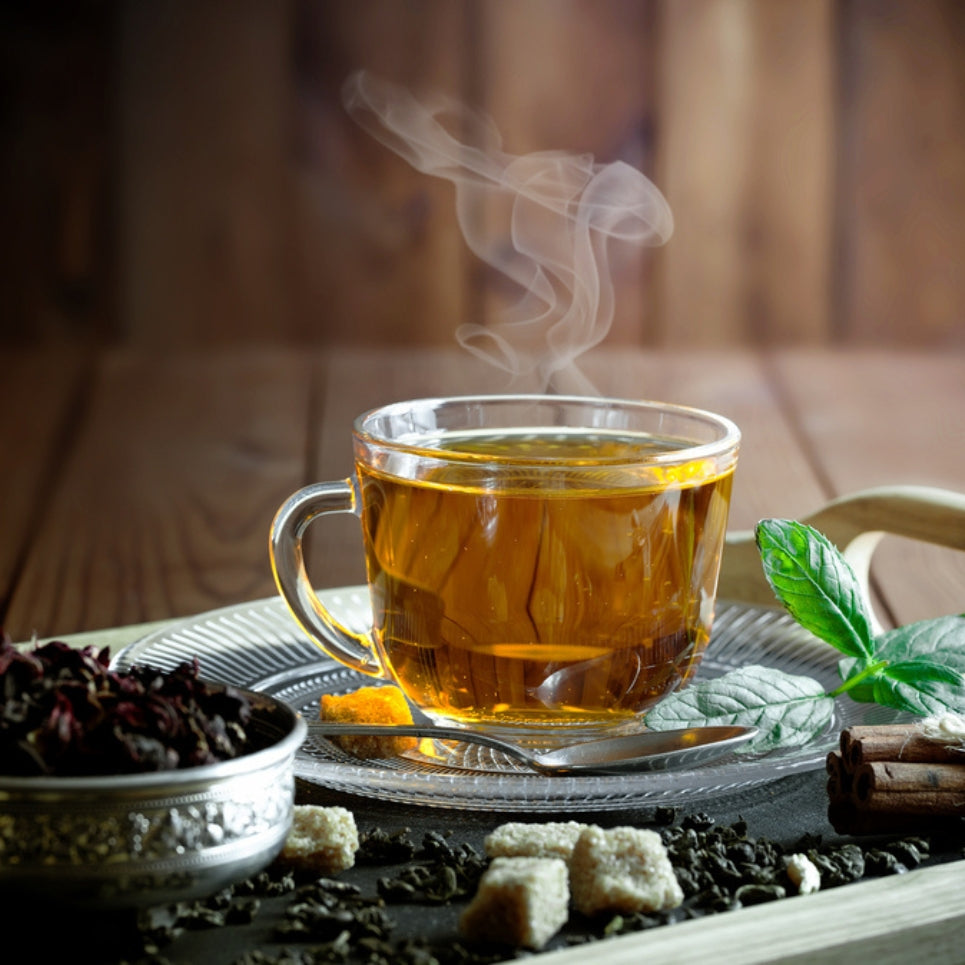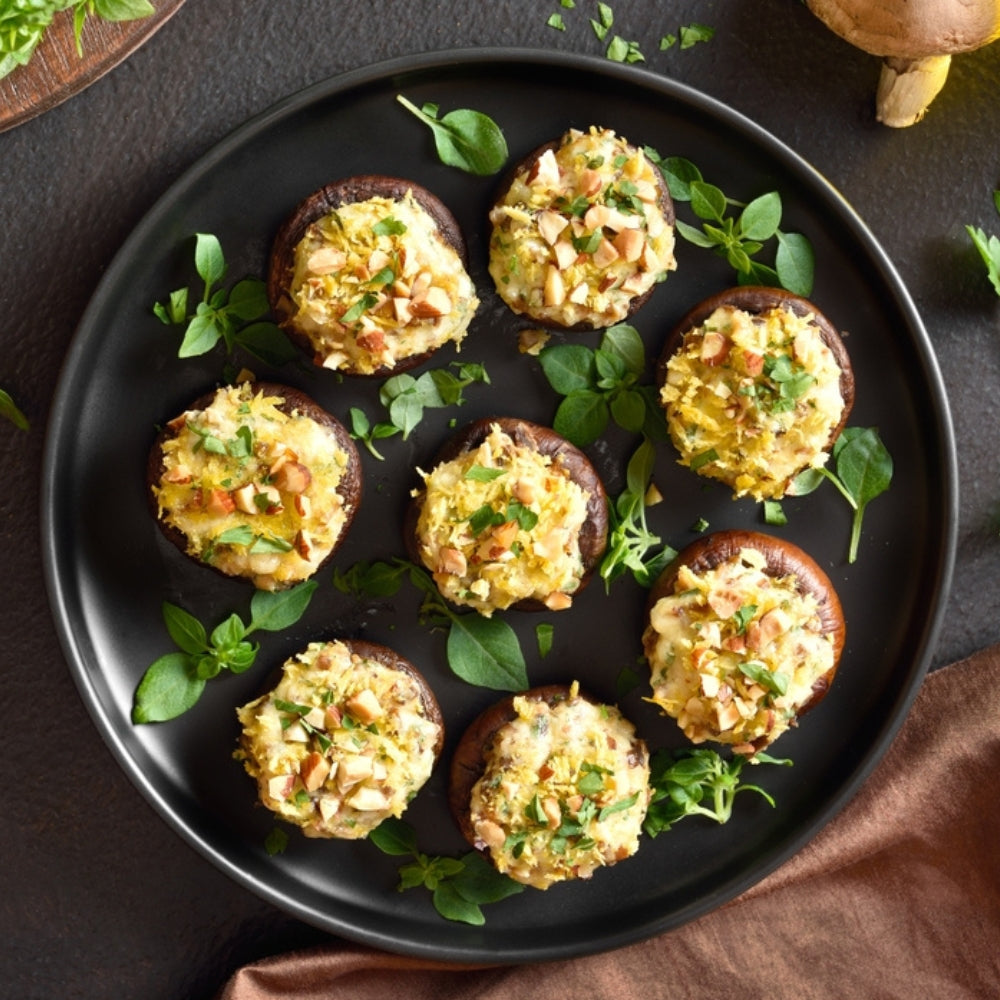Indian cuisine is world-renowned for its bold flavours, aromatic spices, and unique cooking methods. Among the most traditional techniques are the tandoor and chulha, which have been used for centuries to create rich, authentic dishes. These methods offer a depth of flavour that modern appliances can't replicate. This guide will explore the history, techniques, and recipes that make tandoor and chulha cooking a cornerstone of Indian culinary tradition.
Both tools are not just cooking instruments, but symbols of community and family. In many rural Indian households, cooking on a tandoor or chulha is an event, with multiple generations participating in the preparation of meals. These cooking traditions are also a way of preserving cultural heritage, keeping ancient methods alive despite the rise of modern kitchen technologies.
Prep Time: 10 minutes | Cook Time: 25 minutes | Total Time: 40 minutes
Some newer versions also feature eco-friendly designs, reducing energy consumption. While these modern tools offer greater convenience, they still preserve the essence of traditional cooking, allowing home cooks to enjoy the authentic flavours of tandoor and chulha dishes in today’s busy world.
A. Yes, but electric or gas tandoors are recommended for indoor use to avoid excessive smoke.
Q. What fuel is best for a chulha?
A. Traditional chulahs use wood or cow dung, but modern ones may run on charcoal or gas.
Q. Is chulha cooking healthier?
A. Yes, it uses natural fuel and retains the nutrients in food due to slower cooking.
Q. What dishes can I cook in a tandoor?
A. Popular options include tandoori paneer tikka, naan, and various kebabs.
Q. Can chulha dishes be made on a gas stove?
A. Yes, but cooking over a chulha gives a distinct smokiness that's hard to replicate.
What is a Tandoor?

Origins of the Tandoor
The tandoor’s origins date back thousands of years, with evidence of its use in ancient Persia and the Indus Valley Civilization. It was initially a rural household cooking tool, designed to withstand the elements and provide an efficient way to cook. Over time, the tandoor gained popularity across the Indian subcontinent, where it became a cornerstone of traditional cooking, particularly in Punjab and Kashmir, and eventually spread to other parts of the world.How a Tandoor Works
A tandoor is shaped like a large clay pot, often with a cylindrical or vertical design, and has an open top where food is placed on skewers or against the clay walls. Charcoal or wood is burned at the base of the tandoor, creating intense heat that can reach up to 900°F (480°C). This high temperature cooks food quickly, giving it a crispy, charred exterior while locking in moisture and tenderness on the inside.What is a Chulha?

Origins of the Chulha
The chulha has been a part of Indian households for centuries, deeply rooted in the cultural and culinary traditions of rural communities. Traditionally, it has been used for everything from making roti (flatbread) to slow-cooked stews and curries. In many villages, cooking on a chulha is not just a necessity but also a communal activity.How a Chulha Works
A chulha is typically constructed from clay, which has excellent heat retention properties. The structure of the stove is designed to trap heat and ensure that cooking is done slowly and evenly. The fire is lit inside the stove, with fuels like wood, coal, or cow dung cakes used to generate heat. Cooking pots are placed directly on top or within the chulha, where the even distribution of heat helps cook food more efficiently, often resulting in a richer, more flavourful dish.The Role of Tandoors and Chulhas in Indian Cuisine

Both tools are not just cooking instruments, but symbols of community and family. In many rural Indian households, cooking on a tandoor or chulha is an event, with multiple generations participating in the preparation of meals. These cooking traditions are also a way of preserving cultural heritage, keeping ancient methods alive despite the rise of modern kitchen technologies.
Health Benefits of Traditional Cooking Techniques
Traditional cooking with tandoors and chulhas offers several health benefits. These methods use minimal oil, helping reduce calorie intake while preserving the natural flavours and nutrients of food. Cooking in a tandoor locks in moisture, maintaining vitamins and minerals, while the slow cooking of a chulha makes food easier to digest. Both techniques encourage healthier, more conscious eating by focusing on whole foods and natural flavours.Famous Indian dishes using tandoor and chulha
Tandoori mushrooms

Prep Time: 15 minutes | Cook Time: 10-12 minutes | Total Time: 30 minutes
Servings: 4
Ingredients:
- Cremini mushrooms – 12-15
- Pink salt – to taste
- Yogurt – 1/2 cup (thick)
- Garam masala – 1 tsp
- Cardamom powder – 1/4 tsp
- Red chili powder – 1/2 tsp
- Onion – 1 small, finely chopped
- Green chili – 1, finely chopped
- Garlic – 4-5 cloves, minced
- Olive oil – 2 tbsp
- Ginger – 1-inch piece, grated
- Mixed bell peppers – 1/2 cup, finely chopped
- Black pepper – 1/4 tsp
- Grated mozzarella cheese – 1/4 cup
- Coriander-pudina chutney – for serving
- Cumin powder – 1/2 tsp
Steps to Make:
-
Prep the Mushrooms:
Scrub the mushrooms and remove the stems by twisting or using a paring knife. Set aside the chopped stems. -
Make the Stuffing:
Heat 2 tbsp olive oil in a pan. Add ginger, garlic, green chili, onion, and chopped bell peppers. Cook for 2-3 minutes. Add the chopped mushroom stems, salt, and black pepper. Cook for 5-6 minutes until the mixture dries up. Set aside to cool. -
Make the Marinade:
In a bowl, mix yogurt, garam masala, cardamom powder, red chili powder, cumin powder, and pink salt. Add the cooled stuffing mix and grated mozzarella. Stir to combine. -
Stuff the Mushrooms:
Fill each mushroom cap with the prepared stuffing, packing them tightly. -
Preheat the Tandoor:
Heat your tandoor to 450°F (230°C). -
Cook the Mushrooms:
Skewer the stuffed mushrooms and place them in the tandoor. Cook for 8-10 minutes, turning occasionally to ensure even cooking. The mushrooms should be tender and slightly charred. -
Add Mozzarella:
Sprinkle grated mozzarella on top of the mushrooms and cook for another 1-2 minutes until the cheese melts and bubbles. -
Serve:
Remove the mushrooms from the tandoor, drizzle with coriander-pudina chutney, and garnish with fresh coriander. Serve hot!
Tips:
- For extra smokiness, you can add a small piece of charcoal with a bit of ghee in the tandoor or grill.
- If you don’t have a tandoor, you can use a grill or a hot oven, but be sure to get that smoky flavour using direct heat at the end.
Hara Bhara Kebab

Prep Time: 20 minutes | Cook Time: 12-15 minutes | Total Time: 35 minutes
Servings: 4-6
Ingredients:
- Spinach – 1 cup, blanched and chopped
- Green peas – 1/2 cup, boiled
- Boiled potato – 2 medium, mashed
- Olive oil – 2 tbsp
- Pink salt – to taste
- Chaat masala – 1 tsp
- Amchur – 1/2 tsp
- Garlic – 3-4 cloves, minced
- Green chilies – 1-2, finely chopped
- Cumin powder – 1/2 tsp
- Cornflour – 2 tbsp
- Lemon juice – 1 tsp
- Bread crumbs – 1/4 cup (for binding)
- Green bell pepper – 1/4 cup, finely chopped
- Coriander leaves – 2 tbsp, finely chopped
- Coriander-pudina chutney – for serving
Steps to Make:
- Prepare the Vegetables: Blanch the spinach in boiling water for 2-3 minutes, then drain and chop it finely. Boil the green peas and mash them lightly with a fork. Boil the potatoes and mash them until smooth.
- Make the Kebab Mixture: In a large mixing bowl, combine the mashed potatoes, blanched spinach, boiled green peas, green bell peppers, and garlic. Add the pink salt, chaat masala, amchur, cumin powder, green chilies, and lemon juice. Mix everything well.
- Bind the Mixture: Add cornflour, bread crumbs, and chopped coriander leaves to the mixture to help bind the kebabs. Mix until the dough comes together and is firm enough to hold its shape. If the mixture is too soft, add more bread crumbs or cornflour.
- Shape the Kebabs: Grease your hands with a little oil and shape the mixture into round or oval patties (about 10-12). You can make them slightly thicker for a heartier kebab.
- Preheat the Tandoor: Preheat your tandoor to 450°F (230°C) or prepare a grill if you're using that instead.
- Cook the Kebabs in the Tandoor: Brush the shaped kebabs with a little olive oil to help them crisp up in the tandoor. Skewer the kebabs and cook in the preheated tandoor for 12-15 minutes, turning them halfway through until they are golden brown and crispy on the outside.
- Serve: Once the kebabs are cooked, remove them from the skewer and serve hot with coriander-pudina chutney on the side.
Tips:
- For that authentic smoky flavour, make sure your tandoor is properly heated and the kebabs are not overcrowded on the skewer.
- If you don’t have a tandoor, you can cook the kebabs on a grill or bake them at 400°F (200°C) in a preheated oven for about 20-25 minutes, flipping halfway through.
Smoky Rice Pilaf

Prep Time: 10 minutes | Cook Time: 25 minutes | Total Time: 40 minutes
Servings: 4-5
Ingredients:
- 1 cup basmati rice, soaked
- 1/2 cup baby corn, chopped
- 1 medium potato, diced
- 1/2 cup green peas
- 1 carrot, diced
- 1 onion, sliced
- 1-2 green chilies, slit
- 1-inch piece ginger, chopped
- 4-5 cloves garlic, chopped
- 1/4 cup fresh mint leaves
- 1 tsp cumin seeds
- 1 bay leaf
- 2-3 cardamom pods
- 1-inch cinnamon stick
- 1 star anise
- 1 tsp coriander seeds
- Pink salt to taste
- 2 tbsp oil or ghee
- 2 cups water
Steps to make:
- Prepare Vegetables: Heat 1 tbsp oil in a pan over chulha, sauté potatoes, carrots, and baby corn for 5-6 minutes. Remove and set aside.
- Sauté Aromatics: In the same pan, add cumin, bay leaf, cardamom, cinnamon, star anise, and coriander seeds. Sauté for a minute, then add onions, green chilies, ginger, and garlic. Cook until golden.
- Cook Rice: Add soaked rice, sauté for 2 minutes. Add water and salt, bring to a boil.
- Simmer: Cover and cook on low heat for 15-20 minutes until rice is tender.
- Infuse Smokiness (Optional): Place hot charcoal on top of rice, drizzle with ghee, and cover to infuse smoky flavour for 5-10 minutes.
- Serve: Fluff rice, garnish with mint, and serve hot.
Tips:
- Soak the rice to avoid stickiness.
- Use a piece of charcoal for added flavour if cooking over a chulha.
- Add beans or bell peppers for extra flavour.
Modern Takes on Tandoor and Chulha
Today, electric tandoors and modern clay ovens bring traditional cooking into the comfort of modern kitchens. These innovations allow people to enjoy the smoky, charred flavours of tandoori dishes with added convenience and energy efficiency. Electric tandoors replicate the high heat of traditional tandoors, while compact clay ovens are designed for smaller spaces and faster cooking times.Some newer versions also feature eco-friendly designs, reducing energy consumption. While these modern tools offer greater convenience, they still preserve the essence of traditional cooking, allowing home cooks to enjoy the authentic flavours of tandoor and chulha dishes in today’s busy world.
Why Choose Zama Organics for Authentic Ingredients?
Zama Organics brings you the finest ingredients that honor time-tested cooking techniques. Our collection of fresh spices, herbs, and pantry essentials ensures that every dish you prepare carries the richness of tradition and the purity of nature. From turmeric and cumin to chili powder and cardamom, we source only the highest-quality ingredients, carefully chosen for their authenticity and freshness. With Zama Organics, every bite you take reflects the true essence of Indian cuisine, making your cooking experience as flavourful as it is wholesome.Conclusion
The chulha and tandoor are more than just cooking methods—they represent a rich part of India’s culinary heritage, where food is cooked with care, and flavours are enhanced by fire. The smoky aroma from cooking over a chulha imparts a depth of flavour that cannot be replicated. Whether you're enjoying Tandoori Paneer, a smoky Rice Pilaf these traditional techniques bring an authentic, rustic touch to your plate. They remind us of the communal aspect of dining in India, where meals are shared and celebrated, making every bite a true experience of Indian culture.FAQs
Q. Can I use a tandoor indoors?A. Yes, but electric or gas tandoors are recommended for indoor use to avoid excessive smoke.
Q. What fuel is best for a chulha?
A. Traditional chulahs use wood or cow dung, but modern ones may run on charcoal or gas.
Q. Is chulha cooking healthier?
A. Yes, it uses natural fuel and retains the nutrients in food due to slower cooking.
Q. What dishes can I cook in a tandoor?
A. Popular options include tandoori paneer tikka, naan, and various kebabs.
Q. Can chulha dishes be made on a gas stove?
A. Yes, but cooking over a chulha gives a distinct smokiness that's hard to replicate.




